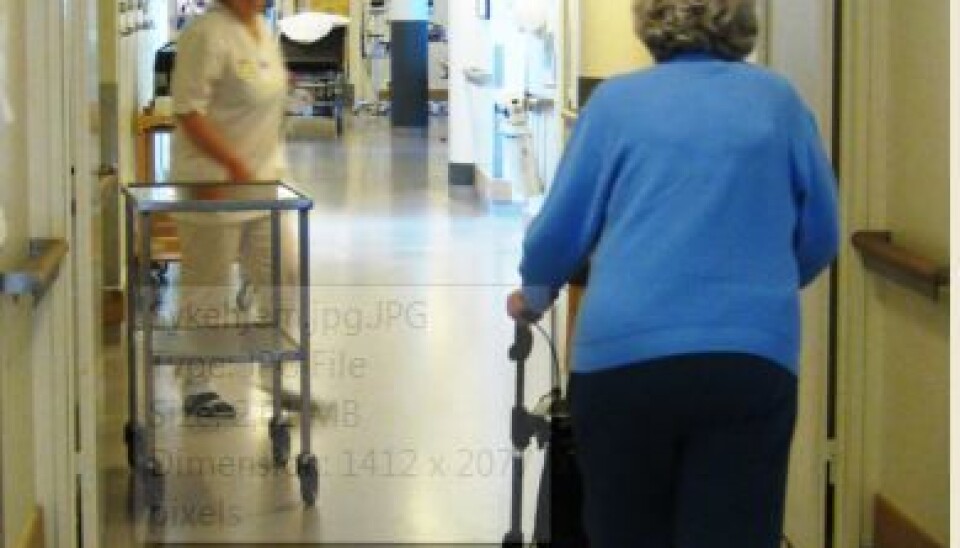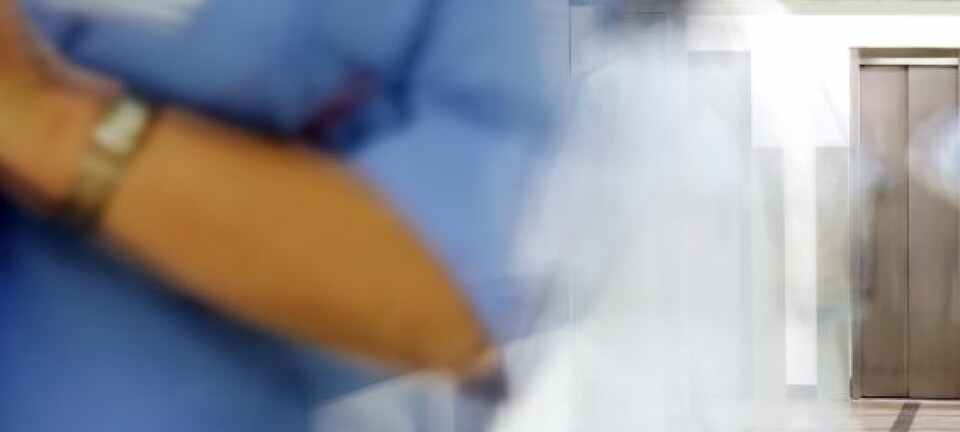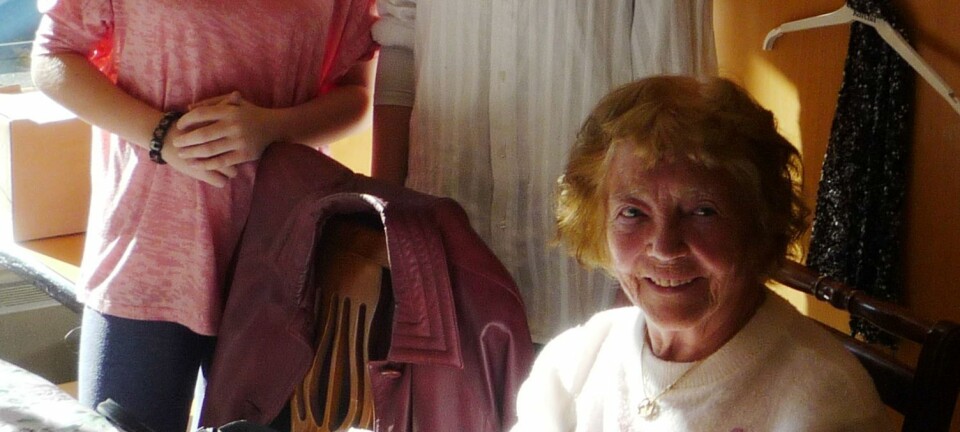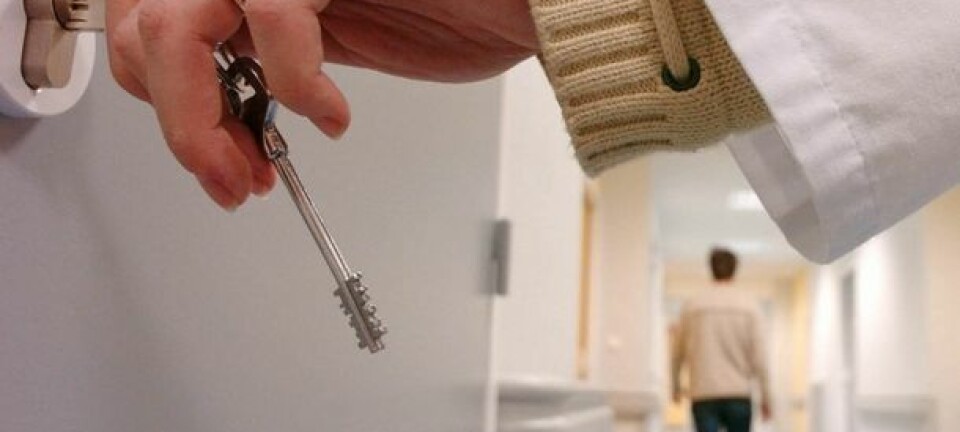An article from Norwegian SciTech News at SINTEF

New floor covering will cut injury rates
A shock-absorbing floor covering will make life safer for nursing-home residents. This could cut bone fracture rates in half.
Denne artikkelen er over ti år gammel og kan inneholde utdatert informasjon.
Norwegians suffer an estimated nine thousand hip fractures annually, and is the country with the highest incidence of hip fractures in the whole world. The price tag for the government is 200 million euros a year.
Individual costs are also great, because hip fractures often reduce quality of life. Rehabilitation is difficult, and many patients never recover completely – which might mean that they need to live in nursing homes.
Help from below
“The new floor covering becomes yielding and flexible when it is subjected to shocks. This makes it ideal for preventing injuries due to falls in care homes for the elderly,” says Peter Friderichsen, a researcher at SINTEF.
American studies have demonstrated that it does work: there was up to a 50 percvent reduction in injuries in care homes that use this type of floor covering.
SINTEF is currently installing the floor covering in a nursing home in Sør-Trøndelag, and the experiences of both patients and staff will be analysed.
As well as trying out the shock-absorbent properties of the floor material in daily use as a permanent floor-covering, SINTEF will also be testing out smaller removable mats.
“We believe that such mats is suitable for placing beside beds in hospitals and other institutions in order to cut injury rates of high-risk patients,” says Arne Nesje, at SINTEF Building Research, who is heading the technical side of the project.
Now, this “mini”-version of the floor covering will be tested in two health institutions. Feedback from the users will have a decisive influence on whether both removable mats and permanent floor coverings could be a solution.
Building technology puzzle
The floor covering has a structure that yields when the pressure is sufficiently high, for example when a person fall, but otherwise it feels hard and is easy to walk on. But although it offers important advantages, there are still some technical and practical challenges to be dealt with before it can be employed in health institutions.
“This is a rubber product that can burn and give off smoke. If we use it in health institutions, the fire regulations say that the material must not be inflammable or generate gases.” says Nesje.
The goal is to adapt the flooring, so that it can be approved for Norwegian health-sector buildings in accordance with the authorities’ building technology codes.
“If we lay a suitable covering on top of the shock-absorbent flooring, it should be fire-safe enough,” explains Nesje.
Finding the right balance between firmness and the ability to yield is another aspect now being studied by the researchers. While it is an advantage that the floor yields slightly when someone falls, this might be a disadvantage when heavy equipment is transported.
Nursing homes have a lot of equipment that is moved around on wheels or casters, like patient hoists, beds and wheelchairs.
"We know that equipment on casters can be a particular problem, because the small wheels can easily sink into the flooring, and make it difficult to move the casters around. But the functional characteristics of the new floor-covering are improved when we lay vinyl or linoleum over it,” explains Nesje.
The scientists still need to identify the critical weight of equipment that needs to be moved. The higher the weight and the smaller the wheels, the less suitable is the flooring.
SINTEF will also look at the potential for using this type of flooring in wet-rooms, since people often fall when taking a bath.
“This is quite possible, but we will have to come up with a functional solution that gives a watertight and easily-cleaned junction between the floor and the wall,” says Nesje.
Reasonable solution
The costs of installing floors of this type should not be a source of worry for building-owners; quite the opposite, believes the researcher:
Time is money, also in the building industry, but according to Nesje, the craftsmen rapidly learned how to install the system. A special adhesive tape is all that is needed to ensure that the floor-covering sticks tightly to the base floor.
"Besides, we can save the cost of a 2.5 cm layer of levelling screed, because the new flooring is about the same thickness. The additional costs are therefore extremely low, particularly in new buildings, and in any case are likely to be recovered through the reduction in injuries among patients,” believes Arne Nesje.
-----------------------------------
Read the Norwegian version of this article at forskning.no

































